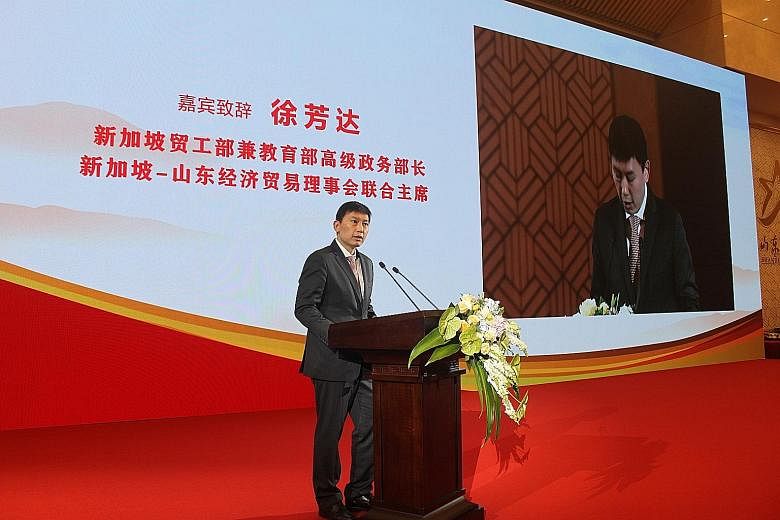Singapore and China will continue to seek new opportunities to grow together as each evolves, Senior Minister of State for Trade and Industry and Education Chee Hong Tat said yesterday as the Singapore-Shandong Business Council (SSBC) marked its 25th anniversary.
Singapore firms can work with their Chinese counterparts in growth areas such as technology, innovation and modern services, he added at the opening of the 20th SSBC meeting.
But China's rising middle class means traditional sectors such as healthcare and education also hold good potential, he said, provided companies can offer innovative and premium products.
Eleven memorandums of understanding (MOUs), involving Singapore entities such as RSP Architects Planners & Engineers and Unihearts International Education Group, and Shandong partners, were inked at yesterday's meeting.
Nanyang Technological University also agreed to embark on a five-year joint research programme on using artificial intelligence in healthcare with Shandong University and other partners.
"These MOUs span a wide spectrum of industries such as innovation, education, master planning and healthcare services," said Mr Chee. "These collaborations reflect the breadth of our economic relationship. I am confident that our economic partnership will create even more possibilities for cooperation in future."
Noting that the economic relationship is supported by robust people-to-people ties, he said the Government is encouraging more young Singaporeans to go to China, and not just to the first-tier cities.
Shandong, for instance, is China's second-most populous province after Guangdong with 100.1 million people, and ranks third in gross domestic product after Guangdong and Jiangsu.
The SSBC, formed in 1993, is the oldest of the seven business councils between Singapore and a Chinese province or municipality.
"We think this is important because, ultimately, it is about building that long-term relationship between Singapore and Shandong, looking for ways where some of these friendships built from young can actually translate into cooperation and into joint ventures in the future," Mr Chee said.
Mr Chee, who is on a four-day visit to Shandong with 60 officials and businessmen, also met Shandong Vice-Governor Ren Airong and Jinan Mayor Sun Shutao.
Officials like Ms Ren see good potential in combining Shandong's strengths, such as in agriculture products, with Singapore's expertise in areas such as food manufacturing, cold chain and logistics, to expand their business footprint overseas, said Mr Chee.
Win-win cooperation can thus be achieved if Singapore can "identify areas where they have strengths, they have an interest... and we are able to bring our strengths and complement what they have", he added.
Singapore firms like Unihearts are likewise able to compete and thrive in China if they can leverage Singapore's trusted branding to offer something the Chinese consumer values, in this case, quality, bilingual pre-school education.
"The way in which our companies do it needs to be different, so that they can differentiate themselves from their competitors from other countries and the local companies," Mr Chee said.

